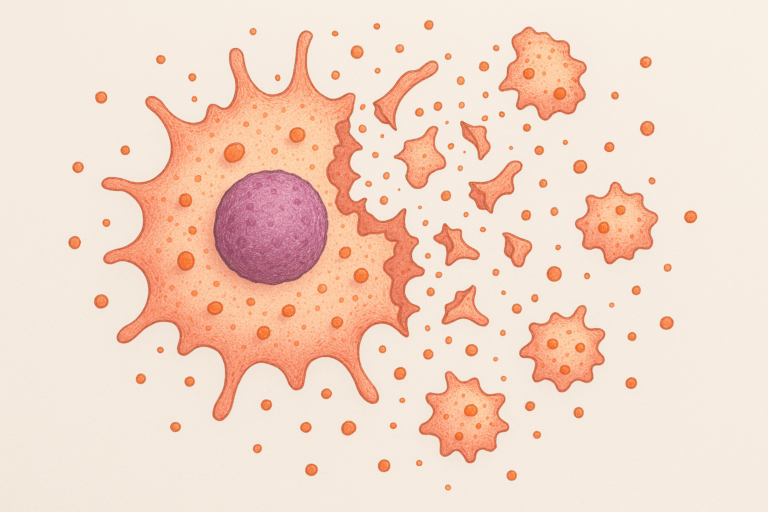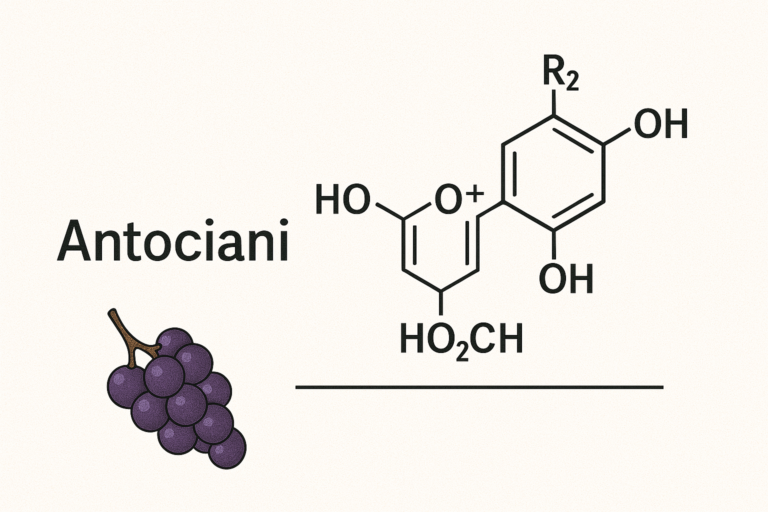The Magical Intertwining: Genes, Environment and Epigenetics
Imagine life as a symphony, where each musical instrument represents a gene. The score, carefully written by your ancestors, is your DNA, the instruction manual for your existence. However, the music that emerges is not rigid; instead, it is dynamic and influenced by the conductor: the environment. This dance between genes and environment is epigenetics, a fascinating discipline that reveals the deep connection between our biological inheritance and the world around us.
One DNA, Many Voices
Your DNA is unique, like a fingerprint. It contains all the information for the construction and functioning of your organism. However, not all of your genes are always “on” or “off.” Epigenetics is like a switch that modulates gene expression, deciding which genes should be active and which should be silent at a given time. A multitude of environmental factors influences this dynamic process.
The Environment, the Master of the Symphony
What exactly is meant by “environment”? It’s about everything around you, from the food you eat to the air you breathe, from the emotions you feel to the relationships you build, from the infections you can get to the stress you face. The environment, in a broad sense, also includes your experiences and behaviors. These factors leave “traces” on your DNA, influencing which genes are expressed and to what extent.
Epigenetic Mechanisms: Chemical Modifications and more
How does the environment communicate with DNA? Mainly through two main mechanisms:
- DNA methylation: Imagine little “chemical tags” attaching to your DNA. These tags, called methyl groups, can “silence” a gene, preventing it from expressing itself. Methylation is a dynamic and reversible process influenced by environmental factors such as diet.
- Histone modifications: DNA is not free-floating in the cell nucleus; It wraps around proteins called histones. Chemical modifications of histones, such as adding or removing acetyl groups, can influence how accessible DNA is to transcription and translation mechanisms. In other words, they can “open” or “close” access to genes, affecting their expression.
These epigenetic mechanisms do not alter the DNA sequence but modulate its activity. They are like volume controllers in a sound system, which can make some instruments louder and others softer. In this way, the environment can change how your genes are expressed, influencing your health and characteristics.
Epigenetic Inheritance: Beyond DNA
One of the most surprising discoveries of epigenetics is that epigenetic changes can be passed on to future generations. This means that the experiences of your parents and grandparents can influence your health, too. For example, studies conducted on populations affected by famine have shown that the grandchildren of those who had suffered from hunger showed a greater susceptibility to certain diseases. This suggests that environmental experiences can leave an “epigenetic memory” passed down through generations.
Epigenetics and Human Health: A Deep Link
Epigenetics is fundamental in various biological processes, from growth and development to aging and disease. Epigenetic alterations have been implicated in the development of numerous pathologies, including:
- Cancer: Epigenetics are critical in the development of cancer. Hypermethylation of tumor suppressor genes can “turn them off,” allowing tumor cells to proliferate uncontrollably. Epigenetic alterations are among the leading causes of tumor progression and drug resistance.
- Cardiovascular diseases: Environmental factors such as diet and stress can affect gene expression and increase the risk of heart disease. Epigenetic modifications can alter the function of heart muscle cells and blood vessels.
- Metabolic diseases: Epigenetic factors influence obesity and type 2 diabetes. Epigenetic modifications can alter glucose and lipid metabolism, increasing the risk of these diseases.
- Neuropsychiatric disorders: Exposure to stress during childhood can leave epigenetic changes that increase the risk of disorders such as depression and anxiety. Epigenetics also plays a role in the development of neurodegenerative diseases such as Alzheimer’s and Parkinson’s.
- Autoimmune diseases: Epigenetics can influence the immune system and contribute to the development of autoimmune diseases such as rheumatoid arthritis and lupus.
- Infectious diseases: Infections can cause epigenetic modifications that influence the host immune response and disease progression.
- Respiratory diseases: Environmental factors and epigenetic modifications influence pathologies such as cystic fibrosis and other lung diseases.
- Diseases of the nervous system: Epigenetics is involved in the development of several nervous system pathologies, such as amyotrophic lateral sclerosis, epilepsy, and Huntington’s disease
Epigenetics: A New Frontier for Therapy
The growing understanding of the role of epigenetics in diseases has opened new perspectives for developing innovative therapies. Epigenetic drugs, for example, can remove “chemical tags” that silence tumor suppressor genes or modify the accessibility of DNA, restoring normal gene expression. Furthermore, modifying the epigenome could be helpful to for regenerative medicine, guiding the differentiation of stem cells towards specific cell types and tissues.
- Gene therapy: Gene therapy uses viral or non-viral vectors to introduce genetic material into cells. CRISPR-Cas9 is a gene editing technique that allows you to modify DNA precisely. It can be used to correct genetic mutations or to modulate gene expression.
- Organoids: Organoids are three-dimensional structures grown in vitro that mimic the structure and function of organs. They can be used to study disease development, drug testing, and regenerative medicine.
- Stem cells: Stem cells can self-renew and differentiate into different cell types. They can be used for regenerative medicine, to replace damaged tissue, or to study disease.
- Nanoparticles: Nanoparticles can deliver drugs, genetic material, or proteins into cells. They can be designed to specifically target diseased cells and release their cargo in a controlled way.
Ethical Implications: A Conscious Journey
Manipulation of the epigenome raises critical ethical questions.
- Germline Editing: The possibility of modifying the epigenome in germ cells, with the consequent transmission of changes to future generations, is of great concern. The risk of unpredictable side effects and potential eugenics are among the main criticisms.
- Accessibility: New epigenetic therapies may not be accessible to everyone, increasing social inequalities.
- Informed consent: It is essential to obtain informed consent from patients before undertaking any epigenetic intervention, especially for minors.
- Potential Military Use: Epigenetics, like other innovative technologies, could be used for military purposes, raising ethical questions related to non-therapeutic enhancement and the production of biological weapons.
- Animal dignity: The generation of chimeric animals for organ transplantation raises concerns about animal dignity, natural environment changes, and physiological needs.
A Future to Write Together
Epigenetics is a discipline revolutionizing our understanding of life, health, and disease. It teaches us that our destiny is not written indelibly in our DNA but that our experiences and the environment around us influence it. Epigenetics makes us responsible, makes us protagonists of our health, and invites us to take care of the environment and protect our future and that of future generations. It is essential, therefore, to face the new ethical and regulatory challenges with awareness and responsibility, promoting rigorous and transparent scientific research and ensuring that the benefits of epigenetics are accessible to all.
Practical implications
- Lifestyle: Adopting a healthy lifestyle, with a balanced diet, regular physical activity, and good stress management, can have a positive impact on the epigenome.
- Environment: Avoiding exposure to toxic substances and pollutants can protect your epigenome.
- Awareness: Educating yourself about advances in epigenetic research can help you make more informed decisions about your health.
- Prevention: Attention to mental and physical health, care for social relationships and community, and avoidance of risky behaviors can have a positive effect not only on one’s own health but also on that of future generations.
Education
Epigenetics is a complex discipline, but it must be accessible to everyone. Education is essential to promote an aware and responsible scientific culture. Correct scientific dissemination can help people understand the importance of the interaction between genes and the environment and make informed decisions for their health and well-being. Schools, the media, and public institutions must try to make epigenetics accessible to all.
Epigenetics reminds us that life is an ever-evolving work of art shaped by the interaction between our biological inheritance and the world around us. We are all invited to participate in this symphony with awareness, responsibility, and empathy.
References
- Hsu, M.-N., Chang, Y.-H., Truong, V. A., Lai, P.-L., Nguyen, T. K. N., & Hu, Y.-C. (2019). CRISPR technologies for stem cell engineering and regenerative medicine. Biotechnology Advances, 37(8), 107447.
- Mahla, R. S. (2016). Stem cells applications in regenerative medicine and disease therapeutics. International Journal of Cell Biology, 2016, 1-28.
- Yang, S., Hu, H., Kung, H., Hu, Y., Dai, Y., Zou, R., … & Li, F. (2023). Organoids: The current status and biomedical applications. MedComm, 4, e274.
- Uddin, F., Rudin, C. M., & Sen, T. (2020). CRISPR gene therapy: applications and prospects for the treatment of cancer. Frontiers in Oncology, 10, 1387.
- MM. (n.d.). ms121_p0170. Artificial Intelligence was not used.
- Liu, W., Wei, S., Sun, C., Wu, M., & Wu, Y. (2021). RNA-targeting CRISPR systems: Advances and therapeutic applications. Precision Clinical Medicine, 4(3), 179-190.
- Mooney, D. J., & Vandenburgh, H. (2015). Tissue engineering for regenerative medicine. Proceedings of the National Academy of Sciences, 112(22), 6850-6855.
- Chen, H., Kazemier, H. G., de Groote, M. L., Ruiters, M. H., Xu, G. L., et al. (2013). Induced DNA demethylation by targeting ten-eleven translocation 2 to the human ICAM-1 promoter. Nucleic Acids Research 42 (3): 1563-1574.
- Chin, A (2015). CRISPR-Cas9 Therapeutics: A Technology Overview. Oxford, UK: Biostars.
- Collins, F.S (2015). Statement on NIH Funding of Research Using Gene-Editing Technologies in Human Embryos. Bethesda, MD, USA: National Institutes of Health.
- Cornelis, M. C., Nugent, N. R., Amstadter, A. B., & Koenen, K. C. (2010). Genetics of post-traumatic stress disorder: review and recommendations for genome-wide association studies. Current Psychiatry Reports, 12 (4): 313-326.
- Gantz, V. M., Jasinskiene, N., Tatarenkova, O., Fazekas, A., Macias, V. M., et al. (2015). Highly efficient Cas9-mediated gene drive for population modification of the malaria vector mosquito Anopheles stephensi. Proceedings of the National Academy of Sciences of the USA 112 (49): E6736-E6743.
- Gracheva , E. O. , Ingolia , N. T. , Kelly , Y. M. , Lamb-Morales , J. F. , Hollopeter , G. , et al. (2010). Molecular basis of infrared detection by snakes. Nature 464 (7291): 1006.
- Greely, H. T. (2019). Human germline genome editing: an assessment. CRISPR Journal 2 (5): 253-265.
- Zou, Q., Wang, X., Liu, Y., Ouyang, Z., Long, H., et al. (2015). Generation of gene-target dogs using CRISPR/Cas9 system. Journal of Molecular Cell Biology, 7 (6): 580-583.
Key Points from the Sources:
- CRISPR Technology: The CRISPR/Cas9 system is a powerful tool for gene editing, utilizing Cas9 nuclease and a programmable single guide RNA. It has broad applications in stem cell engineering and regenerative medicine. The system relies on complementary base pairing to target and edit DNA sequences.
- Stem Cells and Regenerative Medicine: Stem cells are being explored for their therapeutic potential in various conditions, including:
- Cartilage Regeneration: Stem cells can be used to regenerate cartilage tissue for injuries.
- Diabetes Treatment: Stem cells can potentially treat Type 1 and Type 2 diabetes.
- Intestinal Regeneration: Stem cell-derived organoids can regenerate intestinal tissue.
- Corneal Diseases: Limbal stem cell transplantation can treat corneal issues.
- Hair Loss: Stem cells can be used for hair follicle regeneration to treat alopecia.
- Congenital Heart Defects: Stem cells are being explored for repairing congenital heart defects.
- Blood Disorders: Stem cell transplantation can treat blood clotting disorders and hematological malignancies.
- Aplastic Anemia: Stem cell transplantation can treat aplastic anemia.
- Diaphragm Abnormalities: Stem cells can be used for diaphragm regeneration.
- Neurodegenerative Diseases: Stem cell-based therapies are being explored for Alzheimer’s disease, seizures, and other neurological conditions.
- Liver and Lung Diseases: Stem cell-based therapies can address liver and lung degeneration caused by A1AD deficiency.
- Retinal Degeneration: Induced pluripotent stem cells (iPSCs) can generate cells to treat retinal diseases.
- Muscle Tears: Adipose-derived stem cells can treat severe muscle tears.
- Bone Regeneration: Bone marrow-derived stem cells and progenitor cells can regenerate bone, skin, and gums.
- Organoids: Organoids are 3D structures grown in vitro that mimic the structure and function of organs. They are being used for:
- Disease Modeling: Organoids can model diseases such as cancer, liver diseases, and cystic fibrosis.
- Drug Screening: Organoids are used for high-throughput drug screening.
- Toxicity Testing: Organoids can be used to evaluate drug toxicity.
- Infection Studies: Organoids can model viral infections like hepatitis B and rotavirus.
- Regenerative Medicine: Organoids can be used to repair tissues like bile ducts and intestines.
- CRISPR/Cas9 Modifications:
- Specificity: To increase specificity and reduce off-target effects, modified Cas9 enzymes have been developed, such as Cas9-VRER, Cas9-VRQR, Cas9-QQR1, SpCas9-HF1, eSpCas9, HeFSpCas9, evoCas9 and HiFiCas9.
- Nickases: Cas9 nickases (Cas9n/Cas9D10A) create single-strand breaks rather than double-strand breaks, reducing off-target effects.
- RNA Targeting: Cas13 systems are being developed for RNA base editing.
- Delivery Systems for Gene Editing:
- Viral vectors, such as adenoviruses and lentiviruses, are used to deliver gene editing machinery, though they can cause immune responses.
- Non-viral methods like electroporation and lipid nanoparticles are also employed for delivering gene editing tools.
- Ethical Considerations: The ethical implications of gene editing, especially in human embryos and germline cells, are a major concern.
This information should provide a comprehensive overview of the topics from your sources. Please let me know if you have any other questions.






